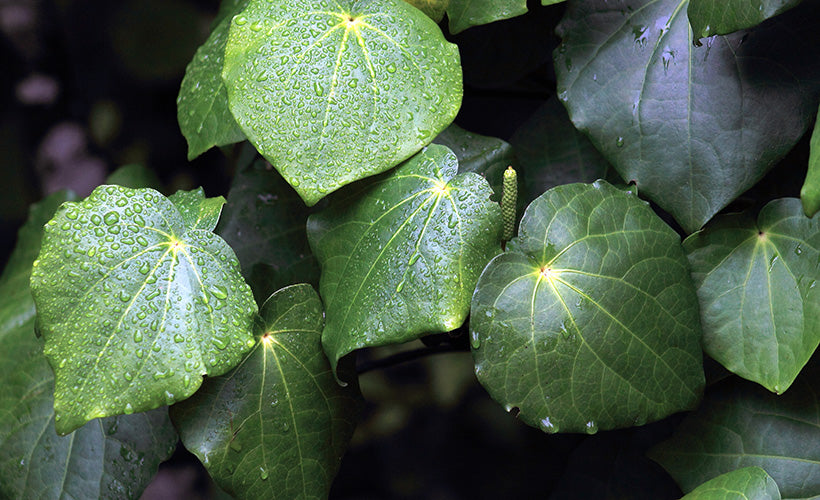
Kawakawa
Share
(Piper excelsum)
kawakawa, a plant revered as taonga in New Zealand and long-used in Māori medicine or rongoā. Found in New Zealand forests, Kawakawa is loved by many. With heart shaped leaves, the looper caterpillar in particular can't get enough, leaving the leaves half eaten, riddled with holes. I always trust the bugs, if they're eating it, to me that means that that leaf especially has high medicinal properties.
Folklore
The berries were eaten by Maori people, particularly children found them pleasant to chew on.
Medicinal Benefits
For swollen teeth and gums and mouth infections, the leaves can be chewed for relief.
Blood purifying - Kawakawa tones the kidneys and the bowels, therefore aiding our bodies to secrete toxins more efficiently. Often we can experience breakouts in our skin because the body is trying to eliminate toxins, therefore blood-cleansing herbs may help with acne and other skin issues.
Aids digestion- Kawakawa can be a useful digestive aid due to its bitter constituents.
Antispasmodic: Spontaneous muscle spasms and cramps can be an unwelcome surprise, especially at night. Kawakawa can help prevent and soothe cramps by increasing blood circulation and relaxing muscles.
Skin- Kawakawa has antibacterial, anti-inflammatory, antimicrobial, and anodyne properties, it can help with the healing of cuts and wounds and can be used in formulas to help relieve pain, inflammation, and irritation of skin issues like eczema and psoriasis, boils, bites, stings,acne, rashes, burns.
Energetics
Kawakawa is a cooling, cleaning, and mildly drying plant that also has hydrating properties.
References
- A field guide to Native Edible Plants of New Zealand - Andrew Crowe
